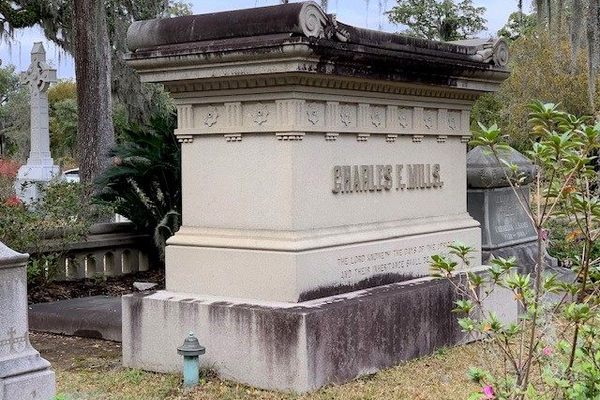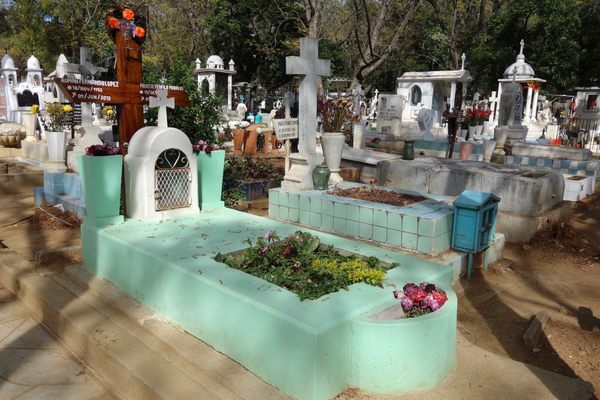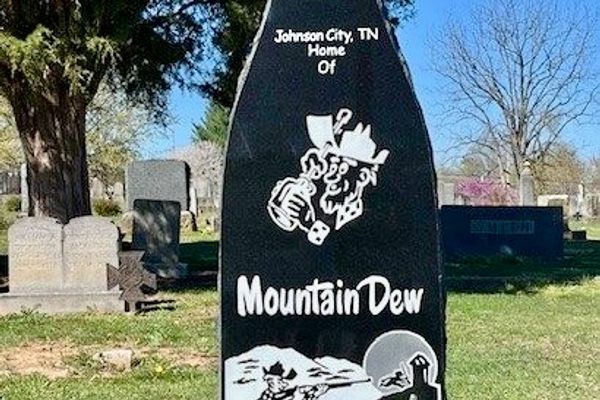Charles F. Mills Grave Bell
A 19th-century cemetery device to ensure that the prematurely buried would be "saved by the bell."
Although ingrained in the human psyche, taphophobia—the fear of being buried alive—was at a zenith in the 19th century. This fear undoubtedly influenced the appearance of premature burial in stories by contemporary writer Edgar Allan Poe. The horror of premature burial was magnified in southern port cities like Savannah, Georgia, that experienced periodic yellow fever epidemics. The comas of patients could be so deep that the victims were mistaken for dead.
Inventors and entrepreneurs capitalized on this phobia by marketing a variety of solutions to facilitate the resurrection of those buried before actually dead. Many of these solutions involved alarms that could be triggered by the entombed to alert cemetery staff of their need for rescue.
The remnants of one such device can be seen at the grave of Charles F. Mills at Bonaventure Cemetery. Mills was a prominent and wealthy Savannah businessman in the 19th century. A merchant running a line of steamers on the Savannah River, he also served as the president of the Marine Bank of Georgia. Mills was buried in Bonaventure Cemetery on April 11, 1876, at the age of 74.
His grave bell sits atop a pipe rising a few inches from the ground next to the right side of Mills’ tomb. The bell was connected to one or more strings or wires attached to the coffin’s occupant’s fingers or toes. If the deceased awoke, his movements would ring the bell and alert the cemetery staff. Attendants could then pump fresh air down the pipe until the coffin’s occupant was disinterred and rescued.
By the 20th century, the widespread practice of embalming obviated the need for grave bells and safety coffins because there was little likelihood that someone could survive that process and be interred alive. However, during the 1800s, grave bells were fairly common sights at the graves of Bonaventure’s wealthier occupants. Most were made of tin or base metal and later salvaged for use in military production during World War I. Because of his insistence that it be cast in bronze, Charles Mills’ is the last intact grave bell at Bonaventure Cemetery. The grave is located in Section F16.
Know Before You Go
The cemetery is open to the public daily from 8 a.m. to 5 p.m. There is no admission fee.

























Follow us on Twitter to get the latest on the world's hidden wonders.
Like us on Facebook to get the latest on the world's hidden wonders.
Follow us on Twitter Like us on Facebook